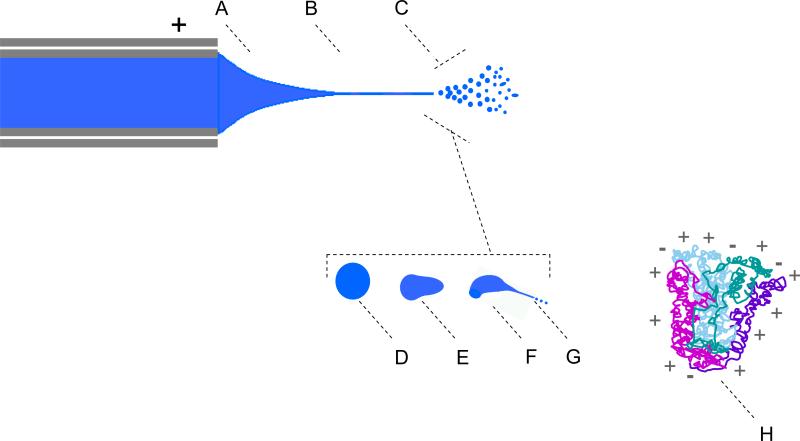Figure 1.
Three–Regime View of Electrospray Ionization for a spray operating in cone–jet mode. Region A corresponds to liquid from the edge of the emitter tip through the Taylor cone up to the jet, B corresponds to the jet and C to the point where the jet disrupts to initiate an electrospray plume. An expanded view of the plume shows stages of ESI droplet evolution, regions D, E, F, and G. As droplet D evaporates, the increasing electrostatic repulsion causing it to distort (E), and ultimately eject its own secondary droplets by asymmetric fission (F). Excess charge is disbursed to primary droplets in region C, and to secondary droplets in G. Steps D–G may repeat to produce higher order droplet progeny, until the volatile droplet evaporates. Our model assumes that ions, as well as droplets are ejected from regions C and/or G to yield H, a gas phase analyte ion (likely solvated). Our model considers that a small number of opposing charges may also be present in the gas phase ion.

